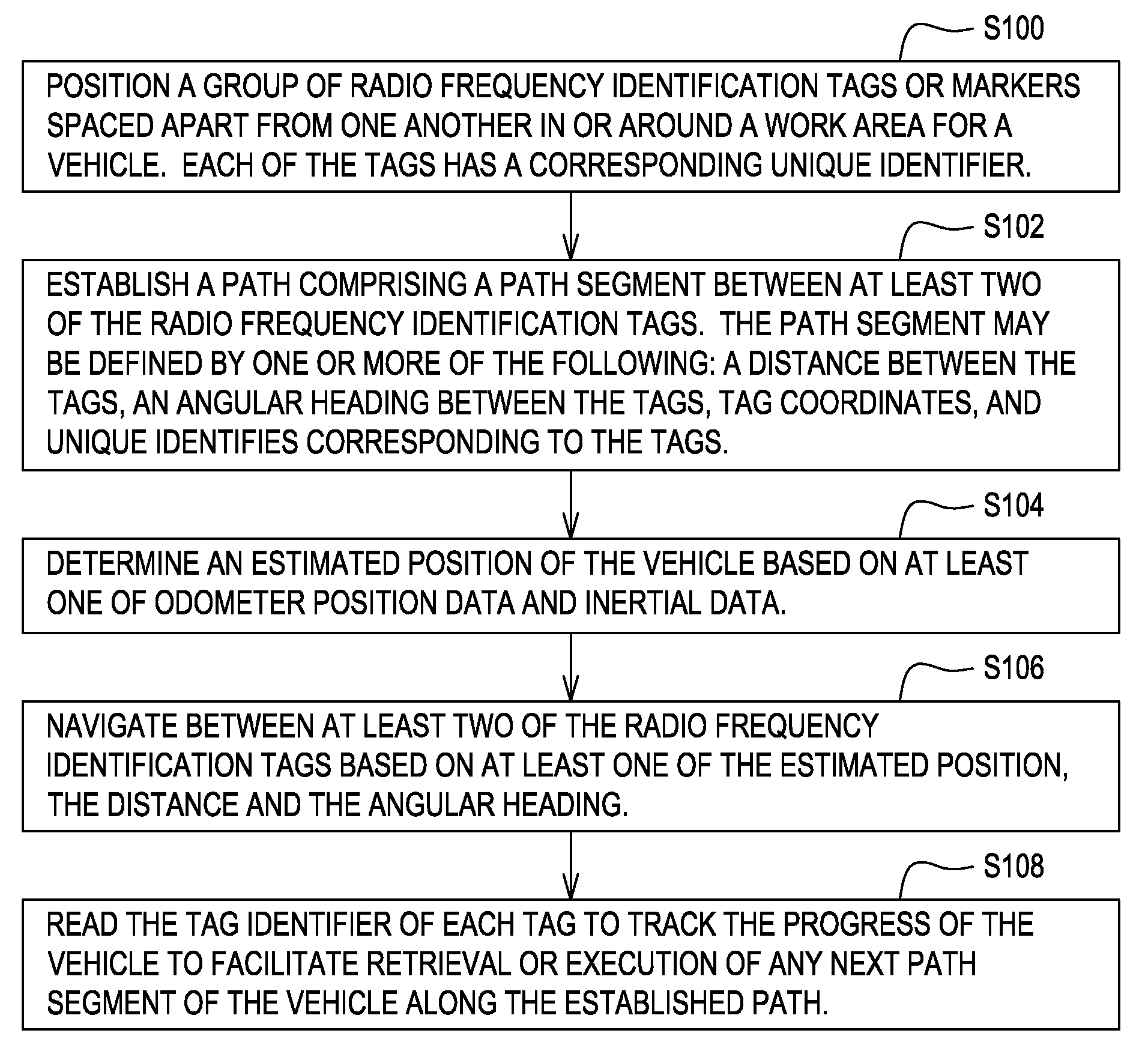Method and system for determining a position of a vehicle
a robotic vehicle and position technology, applied in the direction of process and machine control, using reradiation, instruments, etc., can solve the problems of slow execution or retrieval of random paths, and achieve the effect of facilitating execution or retrieval
- Summary
- Abstract
- Description
- Claims
- Application Information
AI Technical Summary
Problems solved by technology
Method used
Image
Examples
Embodiment Construction
[0016]In FIG. 1, in accordance with one embodiment, a system 11 for determining position of a vehicle comprises an odometer 10, a reader 12, and an inertial sensor 16 that are capable of communicating sensor data to a data processor 20 via a data bus 14. Sensor data includes one or more of the following: odometer data, radio frequency identification tag data, and inertial data (e.g., accelerometer data). Inertial data is synonymous with inertial sensor data. The data processor 20 may communicate with a data storage device 15 and a vehicle controller 24, directly or indirectly through the data bus 14 as shown in FIG. 1. The vehicle controller 24 is coupled to a propulsion system 18, a braking system 25 and a steering system 28. The communication lines or paths interconnecting the vehicle controller 24 to the propulsion system 18, the braking system 25, and a steering system 28 may be routed through or connected to one another via a secondary data bus (not shown).
[0017]As illustrated ...
PUM
 Login to View More
Login to View More Abstract
Description
Claims
Application Information
 Login to View More
Login to View More - R&D
- Intellectual Property
- Life Sciences
- Materials
- Tech Scout
- Unparalleled Data Quality
- Higher Quality Content
- 60% Fewer Hallucinations
Browse by: Latest US Patents, China's latest patents, Technical Efficacy Thesaurus, Application Domain, Technology Topic, Popular Technical Reports.
© 2025 PatSnap. All rights reserved.Legal|Privacy policy|Modern Slavery Act Transparency Statement|Sitemap|About US| Contact US: help@patsnap.com



